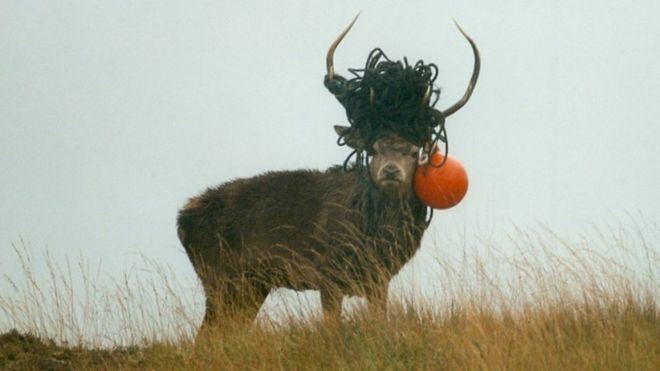Pesticides and Plastics
The EU has voted for further restrictions on the use of neonicotinoid pesticides(1). Three neonicotinoids (clothianidin, imidacloprid and thiamethoxam) will no longer be allowed for outdoor use. There is growing scientific evidence that these chemical are harmful to bees and other pollinators so a ban could have a really positive impact on their populations. Though this was an EU vote the UK voted for a ban and Defra say that the ban will remain in the UK after Brexit.
Meanwhile, the EU is about to launch it's plan to dramatically reduce the use of single-use plastic across the union(2). There's an extensive list of items the EU want to tackle which includes: cotton buds, forks, knives, spoons, chopsticks, plates, beverage stirrers and sticks for balloons. At the moment this is still at the draft stage but seems likely it will make it into EU law in the future.
With the UK leaving the EU though it's likely these new rules will only be put in place after we've left and so it's up to Environment secretary Michael Gove to follow Europe's example. Gove has regularly talked about this sort of legislation so hopefully this will indeed happen but nothing is guaranteed.
It's worth remembering why this sort of ban is needed. This month shocking images taken on the Isle of Rum were released showing red deer stags caught up in discarded fishing gear(3).
Plastic and other rubbish has negative effects wherever it ends up. Marine life ends up consuming plastics, from tiny plankton up to turtles and even whales and it can kill. Birds too are regularly found with alarming amounts of plastic in their stomachs or tangled in human rubbish. These images remind us that things that end up in the sea will likely end up on land sooner or later and therefore any animal can suffer because of it. Two red deer stags died after becoming tangled up in ropes.
State of the World's Birds
A five year compendium of population data has revealed alarming results(4). One in eight bird species across the world are threatened with extinction, including once common species like puffins, snowy owls and turtle doves. At least 40% of bird species are in decline because of human activity.
Of the 1,469 globally threatened species 74% of them are threatened primarily by farming. Logging, invasive species and hunting are also major threats- in the Mediterranean region alone an estimated 12-38 million individual birds are hunted every year.
There is a tiny piece of good news amongst all this. BirdLife has reported that there are 25 species that would have gone extinct were in not for conservation efforts. Birds like the Guam Rail have been removed from the 'critically endangered' list. This shows that all hope is not lost but real efforts are needed to change the way humans behave to protect our birds and the rest of our wildlife too.
National Parks
Environment secretary Michael Gove has announced a review into the country's natural landscapes with the potential for more national parks to be created in England(5).
On the face of it national parks are good for the area. They protect it from large-scale development and have stricter rules to protect wildlife and the local environment. Having witnessed the UK's newest national park, the New Forest, be created though I have mixed views.
The New Forest has seen a real rise in visitor numbers in recent years and the creation of national park status is usually credited with this. But whilst more visitors might be good economically for the area it's not so good naturally. The New Forest is home to many ground-nesting birds whose numbers are falling quickly, like curlews, and it's thought that this is happening because they are increasingly being destroyed or disturbed by humans or dogs. Though evidence is limited, it appears that national park status has had a negative effect on a number of species.
When the New Forest National Park was being proposed Ringwood kept being included and then excluded from the park and in the end was left outside the boundary. This left the town open to major development. Due to the national park status small developments inside the Forest are difficult to create and so larger ones at Ringwood and other boundary-towns are being created. They are still destroying habitats and I can't help but think it would have been better for the environment if developments could have been spread out more.
Guess Who's Back
Some good news now with the chequered skipper butterfly returning to England through an introduction programme(6). The chequered skipper's numbers reduced in the 70s and after a drought in the summer of 1976 the species disappeared from England altogether (though it is still found in the Highlands of Scotland). Now Butterfly Conservation has released some in a forest in Nottinghamshire which were caught in Belgium. The reintroduction is more difficult than you might imagine as the team had to ensure the forest was a suitable habitat for the species, even planting specific food plants.
Finally, the National Police Air Service based at Bournemouth Airport recently tweeted this great photo of a hare at the airport(7):
It's great to know that hares are thriving at the local airport and even better to know that people are looking out for them.
Nature News will return in June, see you then.
1: Gov.uk: 'Further restrictions on neonicotinoids agreed'
2: The Guardian: 'Gove urged to follow Europe with ban on single-use plastics'
3: BBC News: 'Stags on Rum found tangled in discarded fishing gear'
4: The Guardian: 'One in eight bird species threatened with extinction, global study finds'
5: BBC News: 'England could have new national parks in Gove review'
6: The Guardian: 'Back from the brink: chequered skipper butterfly takes to English skies again'
7: Twitter: NPASBournemouth














